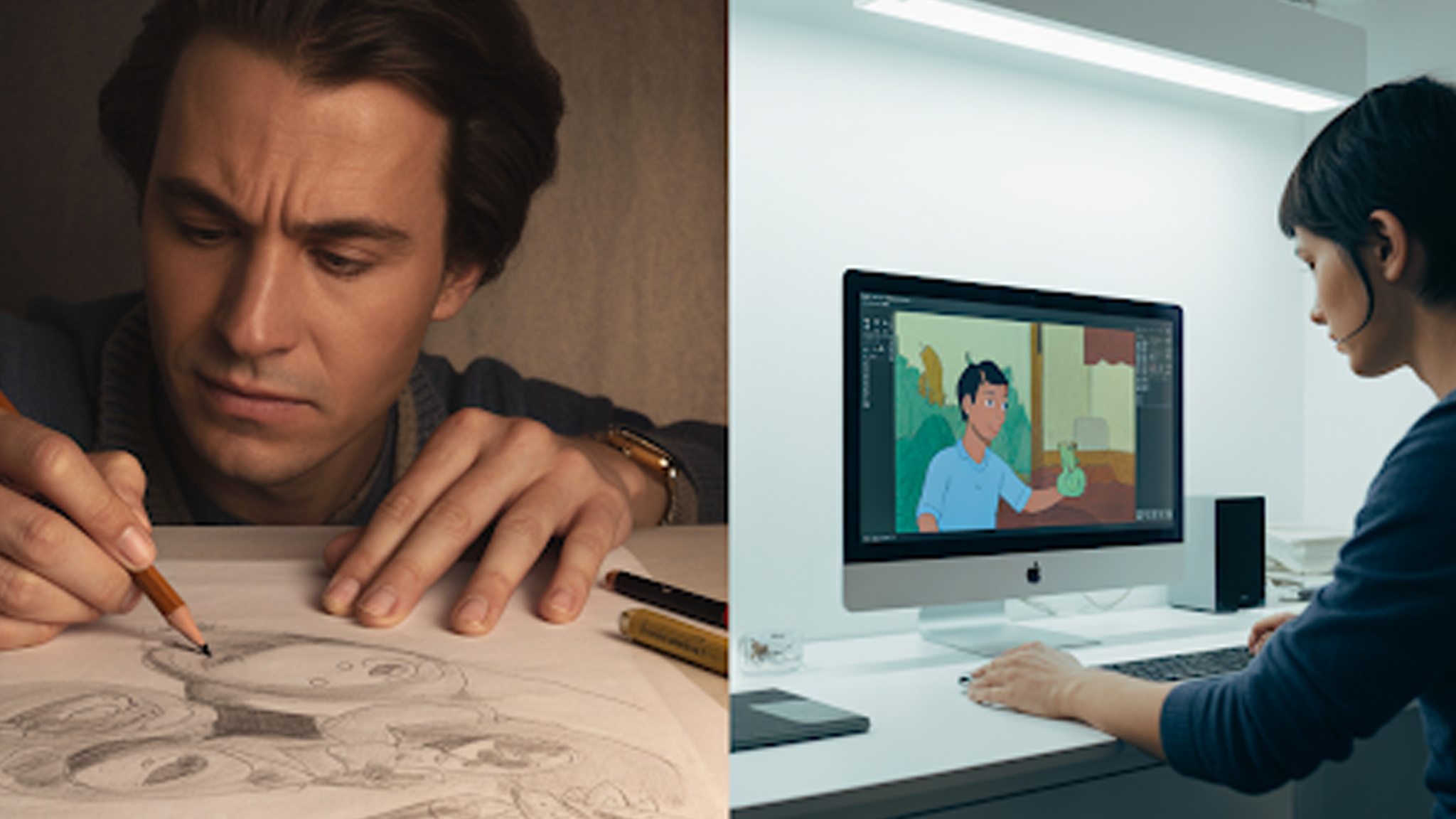You see animation in ads, explainer videos, training material, and even product demos. Businesses use it because it is easy to explain concepts.
A short animated video can explain more in 30 seconds than a thousand words of text. And it sticks. Studies show that viewers retain 95 percent of a message when they watch it in a video compared to just 10 percent when reading text.
But here is the real question: should you go for traditional animation or digital animation? The two are linked, but they are not the same. Each comes with its own strengths, limits, and costs. If you are new to animation, this is where most confusion starts.
Why Animation Matters in Business
Animation is more than entertainment. It is now a business tool. Companies use it to explain products, pitch services, or educate customers. Training teams also rely on animated content to simplify hard topics.
Marketing data backs this up. According to Wyzowl’s annual report, 91 percent of businesses say video is an important part of their strategy. Animation, being flexible and cost-friendly, sits right at the center of this trend.
The reason is simple. Animation makes complex ideas easy. It also grabs attention faster than live action. That is why animated explainer videos and product walkthroughs keep showing up in B2B and B2C campaigns.
Businesses that want to use animation effectively often turn to specialists. At AnimatedVideos.co, we focus on 2D digital animation made for business needs.
Our videos simplify messages, build brand trust, and keep viewers engaged. From product explainers to animated logos, we help companies use animation as a tool for growth.
What Is Traditional Animation?
Traditional animation is the oldest form of commercial animation. Every frame is drawn by hand, usually on paper or transparent sheets. Disney’s early films like Snow White or The Lion King were made this way.
The process is slow and expensive. Artists need to draw thousands of frames, then photograph them to create motion. Mistakes are harder to fix, and the scale of work is massive.
But traditional animation also has its charm. It feels warm, personal, and handcrafted. The imperfections often add character. Many creative studios still use it for artistic projects, even though digital tools are faster.
What Is Digital Animation?
Digital animation replaces the hand-drawn sheets with software. Every frame is created, edited, and animated on a computer. Programs like Adobe Animate, Toon Boom, and After Effects make it easier to build characters, add motion, and adjust timing.
Digital animation comes in two main forms: 2D and 3D. In 2D, characters move in flat space, similar to cartoons or explainer videos. In 3D, objects move in depth, making them look realistic. Pixar, DreamWorks, and gaming studios depend on 3D to create lifelike content.
For business use, 2D digital animation is the most practical. It is faster, costs less, and communicates clearly. You can change details, add text, and scale production without redrawing everything.
Traditional vs Digital Animation: Main Differences
When you compare traditional and digital animation side by side, the differences are clear.
1. Production speed
Traditional animation takes months. Every frame must be drawn by hand. Digital animation uses software shortcuts, reusable assets, and layers. This speeds up production dramatically.
2. Cost
Traditional animation requires more labor and time. That makes it expensive. Digital animation lowers costs because one artist can do the work of several.
3. Style and look
Traditional animation feels handmade and unique. Digital animation looks sharper, more polished, and flexible. You can switch styles quickly without starting from scratch.
4. Flexibility
Editing traditional animation is a nightmare. A single mistake can mean redoing dozens of frames. Digital animation lets you fix errors in minutes.
5. Business use
Traditional animation is best for art, nostalgia, or passion projects. Digital animation is best for business, education, and marketing because it scales easily.
Why Businesses Choose Digital Animation
Digital animation is the clear choice for most businesses today. It delivers quality, speed, and control. You can build animated explainers, ads, or training clips in weeks instead of months.
Another big reason is adaptability. Businesses often need edits after launch, whether to update pricing, branding, or features. With digital files, changes are simple. Traditional animation does not offer that luxury.
This matters when you think long term. Campaigns evolve. Branding changes. Software updates. Digital animation allows your content to keep pace.
How Traditional vs Digital Animation Shapes Brand Perception
The animation style you choose reflects your brand. Traditional animation gives a sense of artistry and nostalgia. It tells audiences that you value craft and heritage.
Digital animation signals modernity. It communicates efficiency, clarity, and adaptability. For tech firms, startups, or e-commerce brands, digital feels like the natural fit.
If your goal is to educate, persuade, or simplify, digital animation wins. It is practical and scalable. If your goal is to express artistry or emotional depth, traditional animation may be worth exploring.
Where 2D Digital Animation Stands Out
Many beginners assume 3D animation is always better because it looks realistic. But that is not true. For business, 2D often performs better.
2D digital animation is quicker to produce, cheaper, and easier to update. It also directs focus to the message, not just the visuals. That is why most explainer videos, training modules, and product walk-throughs are made in 2D.
A cartoon logo compared to 3D cartoon logo makes this point clear. Both can work, but a flat 2D version often communicates more directly and works across formats like websites, print, and social posts.
If you later want to build 3D spinning logo animations with rotation effects in 3D logo design, you can expand. But 2D is the starting point.
The Role of Logos and Animation in Branding
Animation is not limited to ads or explainers. Even logos are now animated. Businesses animate their logos to capture attention in presentations, product launches, or social media reels.
Free tools to design cartoon logo are available, but they often look generic. They cannot deliver the polish a professional project demands. A custom animated logo designed with care can elevate your brand.
An AI-powered 3D logo maker might help with quick experiments, but for serious business impact, creative direction matters. That is where expert studios step in.
Traditional vs Digital Animation in Marketing Campaigns
Marketing campaigns demand speed and consistency. Traditional animation often slows projects down, while digital makes scaling simple.
| Factor | Traditional Animation | Digital Animation |
| Production Speed | Long, frame-by-frame process | Fast, reusable assets |
| Cost | High, labor-intensive | Lower, fewer resources needed |
| Flexibility | Hard to edit and adapt | Easy to update and repurpose |
| Campaign Fit | Works for art-driven projects | Best for business and multi-platform campaigns |
For competitive markets, this difference is decisive. Brands choose digital animation because it adapts quickly and delivers results without long delays.
The Beginner’s Dilemma: Where to Start?
If you are new, start with 2D digital animation. It is the best entry point. You get speed, affordability, and wide application. Traditional animation is inspiring, but unless you are an artist looking to master the craft, it is not practical for business.
2D also allows you to test campaigns without huge risk. Once you see results, you can expand into 3D or mixed-media formats. But you will always have a foundation built on clear communication.
Why Work With AnimatedVideos.co
This is where we come in. At AnimatedVideos.co, we specialize in 2D digital animation. Our focus is clarity, speed, and storytelling that helps businesses grow.
We know beginners often struggle to connect animation with strategy. That is why we design videos that explain, convert, and last. From explainer videos to animated logos, we make sure the work does more than look good. It performs.
We also adapt to your needs. Whether you want a clean product video, a fun training clip, or a modern animated logo, our team builds it fast and with care. You get content that matches your goals and budget.
FAQs
Why should I use animation for my business?
Animation should be used because it explains products and services clearly. It makes content engaging and easy to understand. Customers remember animated content better than static visuals or plain text.
What is the main difference between traditional and digital animation?
The main difference is the method of production. Traditional animation is hand-drawn frame by frame, while digital uses software to build and edit. Digital is faster, more flexible, and cost-friendly for modern businesses.
Why would you say digital animation is better for campaigns?
Digital animation is better because it allows quick edits and easy reuse of assets. Campaigns often need multiple versions for different platforms. Digital makes this process simple and efficient.
How do you know if traditional animation is still useful?
Traditional animation is still useful when a handcrafted, nostalgic style is needed. It gives content a unique and personal feel. Artistic projects and films sometimes prefer this approach to capture emotion.
What happens if I want you to create a 2D digital animation?
A 2D digital animation can be produced with speed and precision. At AnimatedVideos.co, every project is tailored to explain a message clearly and keep viewers engaged. The focus is always on delivering results for brands.
Why does digital animation usually cost less?
Digital animation usually costs less because software streamlines production. Artists can reuse characters, backgrounds, and effects without redrawing every frame. This reduces labor and shortens delivery time.
What should you choose if fast results are important?
The better choice for fast results is digital animation. It can be delivered in weeks instead of months. Campaigns stay on schedule without compromising on quality.
How can you use animation in a logo?
Animated logos can make branding stand out in presentations, videos, and social platforms. At AnimatedVideos.co, animated logos are designed to reflect brand identity and scale across digital formats. They add a professional edge that static logos cannot.
Why should I trust digital animation for marketing?
Digital animation should be trusted because it is proven to increase engagement. Viewers retain more information from animated videos, which improves brand recall. For marketing, it provides clarity, consistency, and strong visual impact.
Final Word
Traditional animation is beautiful, but it belongs to art and nostalgia. Digital animation belongs to business. The choice depends on your goals. If you want to grow, communicate, and adapt, digital wins.
That is why most companies today invest in 2D digital animation. It gives them speed, flexibility, and results. And it is why AnimatedVideos.co continues to help brands turn ideas into clear, animated stories that work.



